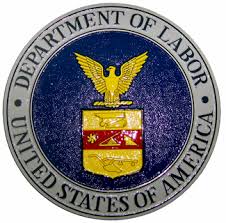Week in Review
The US Department of Labor revealed its highly anticipated labor report for September last Friday disclosing that US employers had created 248,000 new posts during that period. This result was well received by the markets as it emphatically demonstrated that August’s weak performance was nothing more than a brief flash in the pan. The Non-Farm Payroll number (NFP) easily surpassed analysts’ expectations of 215,000 prompting the US Dollar to strengthen even further against a basketful of other major currencies.
The report produced another exciting statistic by demonstrating that the US unemployment rate had unexpectedly declined to 5.9% from its prior reading of 6.1%. The only flea in the ointment was a poor showing by the average hourly earnings figure which rose by a trifling 2.0% compared to the more vigorous 3% prints frequently registered before the financial crisis of 2007/08. However, economists still stressed that the US labor market achieved a healthy improvement during September and provided additional support for sustainable growth.
These promising numbers could now provide enough justification for the US Federal Reserve to contemplate hiking its benchmark interest rates higher sooner-than-expected. Consequently, speculation was rife last Friday about when this event will most likely occur with traders placing extensive bets on July 2015 as their favored option. However, analysts attempted to counter such enthusiasm by advising that it could be misplaced. They formulated this conclusion on the primary factor that as present wage growth still remains largely flat; the ensuing low inflationary rate reduces any stress on the Fed to make any hasty and ill-conceived decisions. Still these recommendations were not sufficient to deter numerous investors from gambling on earlier dates.
What to Expect This Week
The subsequent key economic indicators will be posted this week.
The Eurozone will commence proceedings by declaring a key investor confidence indicator for October on Monday. This indicator should continue to pare the gains it captured earlier during this year by registering yet another decline.
On Tuesday, the monthly policy meeting of the Bank of Japan will conclude. Although no changes are expected, the Governor of the BOJ, Kuroda, would reveal key insights into the possible introduction of new stimulus measures during a subsequent Press Conference. The United Kingdom will then present important industrial production and manufacturing data with the former remaining steady while the latter should post a minor growth of 0.1%.
The pivotal event of the week could occur on Wednesday when the US Federal Reserve reveals the minutes from its last policy meeting. Although no new revelations are expected, investors will still be interested to discover if any committee members disagree with the proposed timescales for interest rate hikes.
Japan will launch Thursday by proclaiming its Machine Orders for August. Analysts rate this parameter as important and forecast a growth rate of 0.7% during August. Later during the day, the Bank of England will announce its interest rate decision. No changes are expected and no new monetary easing policies should be instigated either. The USA will next publish its jobless claims result which is predicted to extend last week’s impressive decline. Mario Draghi, the President of the European Central Bank, is then scheduled to deliver a speech before the start of the G20 meeting. The key point of interest will be whether he will hint at any new stimulus measures to help counter deflation and boost the faltering economy of the Eurozone especially after his disappointing performance last week.




